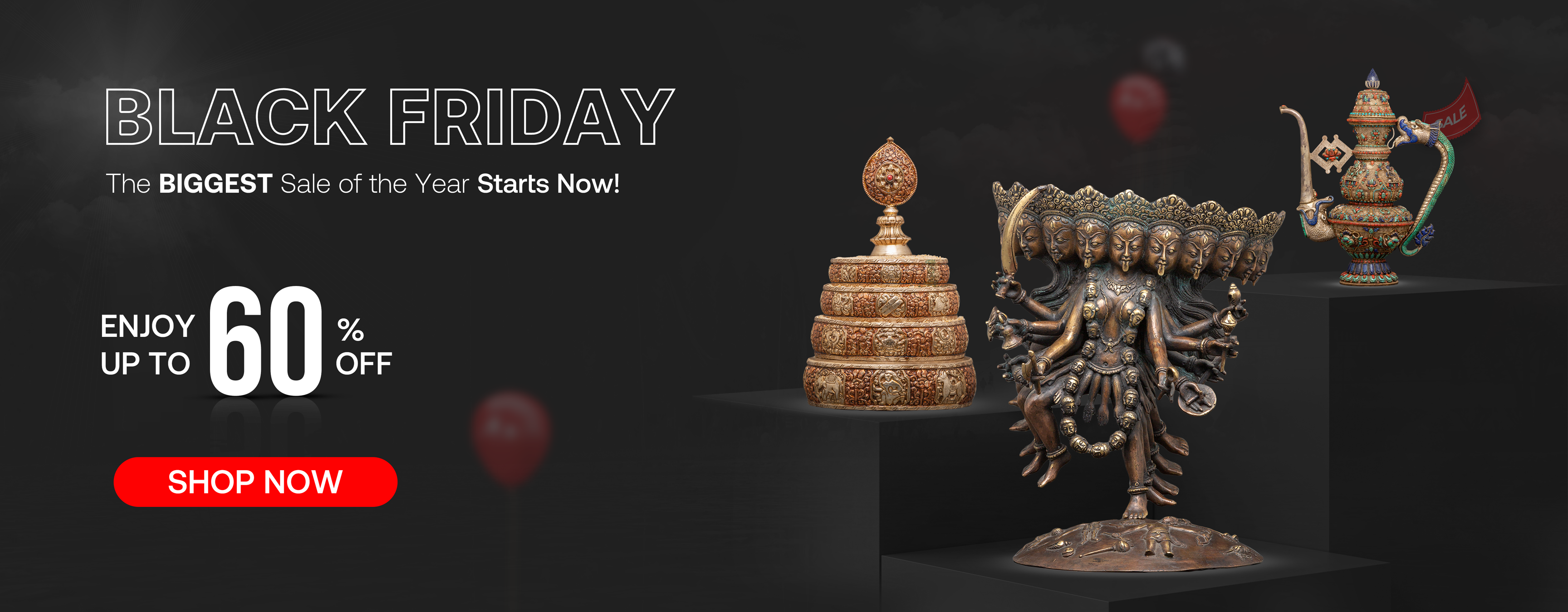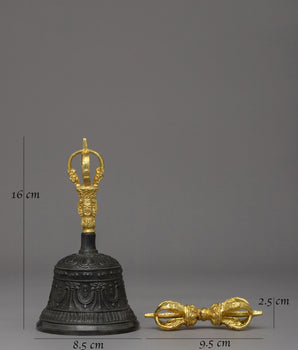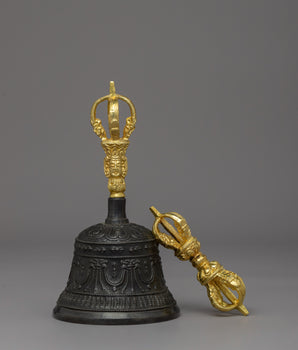How Tradition and Transformation Shape the Mystique of Bhairav Masks
Bhairav masks are one of the few cultural objects that exude a unique awe, mysteriousness, and intensity of sacredness. Emanating out of centuries-old traditions throughout Nepal, India, and parts of Tibet, and are much more than artistic endeavors; they are understood to embody the fierce guardian and destroyer of evil. Bhairav is typically depicted with wide, unblinking eyes, a fanged mouth, a crown of skulls, and bright, rich colors that appear almost impossible. The masks are intentionally designed to draw attention, arouse respect, and elicit protective divinity. For devotees, these mask is not simply an object; it is a living beings, a constant reminder of the balance between creating and destroying, order and chaos, for centuries, being wayfarers that have traveled beyond their original ritualistic context. Initially at the centre of temple worship, sacred ceremonies, and masked performances, Bhairav masks have shifted into museums and collectors’ homes across cultures and have been incorporated into contemporary art in galleries around the world. Regardless of new physical settings and recipients, the mystique of Bhairav is unwavering and continues to grow into the hearts and minds across cultures and generations.
Who is Bhairav?

Bhairav or Bhairava is one of the most terrifying and powerful manifestations of Lord Shiva in Hinduism, and a central wrathful deity in Vajrayana Buddhism, where he is sometimes associated with Vajrabhairava. He originates in both the Shaiva and Tantric traditions, where destruction is considered more of an essential movement of transformation and rebirth.
In Hindu mythology, Bhairav is depicted as a terrifying manifestation born from Lord Shiva’s own body, born from his rage to punish pride, restore cosmic law, and protect sacred knowledge. One of the better-known stories describes how Bhairav severed the fifth head of Brahma when the creator god allowed his pride to cloud his mind. This cut symbolically illustrates the destruction of ego and ignorance. In the Kathmandu Valley of Nepal, seeing Bhairav is standard, particularly in the Newar tradition, where Bhairav is worshipped and understood as a guardian deity (kshetrapala), watching over not only cities, temples, and crossroads, but also as the protective spirit, demanding and vigilant. He must be greeted each day with ritual offerings of flowers, liquor, and ritual dances if he is to be seen as a protector. In Vajrayana Buddhism, Bhairav's terrifying and wrathful form is intended for the practitioner, not an evil deity but a manifestation of compassion—intended to shatter dependence, destroy inner demons, and transform karmic attachment to liberate the soul. Ultimately, Bhairav is much more than a god of destruction; he is the cosmic lawyer of truth, keeper of the sacred, and a powerful reminder of death's impermanence, wresting individuals from lethargy to seek spiritual awakening.
Iconography of Bhairav

1. Wide, Unblinking Eyes
The depiction of Bhairav with wide, unblinking eyes symbolizes Bhairav’s all-seeing quality, as well as being able to see truths that go beyond illusion.
2. Fanged Teeth and Open Mouth
The fanged teeth and gaping mouth symbolize Bhairav’s powerful ferocity to destroy evil beings who cause harm to devotees.
3. Crown of Skulls
The crown of skulls depicts Bhairav’s experience of being master of death, the circle of life and death, and human existence.
4. Third Eye on Forehead
The third eye on the forehead represents transcendent spiritual wisdom and a transcendent awareness beyond the ordinary.
5. Weapons (trident, sword, noose)
The weapons symbolize the destruction of ignorance, severance of attachments to ignorance and obsessive-making forces, and the capture of ignorance and negative beings.
6. Severed Heads or Skull Cups
The severed heads and or skull-cap remind devotees to reflect on the impermanence of life, and the need for spiritual change.
7. Fiery Red or Deep Black Colors
Fiery red or deep black colors reflect Bhairav’s fierce energy as a divine protector, or enforcer of dharma.
8. Wrathful, Fearsome Appearance
Bhairav’s wrathful, terrifyingly fearsome appearance is intended to provoke awe and a healthy fear of divine retribution to support cosmic order.
The Origin of the Bhairav Mask
The earliest Bhairav masks can be traced back to Nepal's Newar people, where they have served an essential role in religious and cultural life for centuries. They feature prominently, especially during Indra Jatra, a regional, eight-day festival in Kathmandu, which serves to honor Indra, the god of rain, as well as Bhairav himself.
Historically, the Bhairav masks originated as ritual objects within the context of tantrism. They were not just artistic objects, but sacred to the creator. They were also protective devices, objects to ward off evil, and powerful instruments of spiritual energy. Their use was restricted to ceremonial dance and temple rituals, all of which involved the wearer of the mask actively participating to bring Bhairav's fierce energy into the physical world.
Bhairav: Revered Guardian, Protector, and Liberator Across Communities

Bhairav is adored in many circles as he fulfills many significant, essential roles that resonate with people from diverse cultural backgrounds. He is considered to be a competent provider of protection for people, safeguarding them from evil forces, black magic, and misfortune. Báhirav operates as the lord of time, and he protects people by encouraging them to remain opportunistically conscious of their potential; to live positively in purposeful pursuit of a benefit. In recognized spiritual paths, such as the Shaivism and tantra traditions, it epitomizes the courage to paradoxically confront death by confronting fear, guiding followers towards liberation. Bhairav's significance transcends cosmological; as an everyday guardian, he is sought by traders, travelers, and people living in cities, for a sense of physical safety, success, profitability, and stability in dealing with life on a daily basis.
Traditional Materials Used in Bhairav Masks
|
Material |
Description |
Purpose and Context |
|
Metalwork |
Gilded copper or brass |
They are most commonly used for temple masks due to their durability and the importance of metal in the sacred traditions of metal. |
|
Wood |
Intricately carved and freely painted. |
This is very common for celebration masks, as they allow for intricate work and the boldness of painted wood without the weight. |
|
Paper-mache |
Lightweight, molded, and painted |
Great for masks worn in masked dances, allowing ease of use and movement. |
Each material has its own relevance and functional value. The metal masks, with their shiny surfaces, symbolize permanence and the eternal presence of the divine. The wooden masks serve as a good compromise between art and ritual use, allowing more detailed representations that surrender suppliant forms of Bhairav's formidable face during our exuberant festivals. The paper-mâché masks allow a much more dynamic movement in dance performances and, thus, lightness and comfort. Ultimately, these materials reveal the diversity of artistic traditions and ritual significance of Bhairav masks, connecting centuries-old practices to the vibrant cultural landscape of Nepal.
Bhairav Masks in Hindu Rituals
The Bhairav masks found in the traditional Hindu contexts are greater than mere ornamental pieces; they become the medium for the divine presence of Bhairav, manifesting the wearer as a living representation of the fierce deity. The Aakash Bhairav is on prominent display in the Hanuman Dhoka Palace during the extremely popular festival of Indra Jatra in Kathmandu. Vendors offer prayers, flowers, and symbolic offerings, like alcohol, to the deity in the hopes of receiving blessings and protection.
Performances, such as the Mahakali Pyakhan, which feature a cast donning Bhairav masks, dramatize the cosmic battles between opposing forces of good and evil. All masquerade performances are ritual performances meant not only to restore cosmic balance and repel energies that are less than helpful but are also meant to invoke the protection of the god Bhairav. The fierce expressions of the masks reinforce the ambience of the sacred performance, creating a sense of awe and devotion in the spectators.
Bhairav Masks in Tantric Buddhist Performance
The wrathful congregations of Vajrayana Buddhist traditions interpret Bhairav in his terrible form as Vajrabhairava, a primary deity of tantric practice. The masks of Vajrabhairava are used in Cham dances, which are sacred ritual dances performed by monks as a holy practice. The Cham dances are significant spiritual experiences, and the fearsome visage of this wrathful deity evokes the power to transmute the inner evils of demons, negative emotions, and ignorance into the wisdom aspect of enlightenment.
The masks are practical ritual tools, enabling the dancer to invoke Vajrabhairava and aid the practitioner in letting go of attachments, evoking the energy of helpful and skillful wrath; far from being destructive, this fierce form of Bhairav expresses compassionate wrath intended to destroy limitations on the seeker otherwise unable to reveal their inner truths, as well as obstacles to liberation. By showing the movements and symbolism in their dances, the monks employ Bhairav's wrath to help a practitioner undergo a transformative process and accomplish awakening and protection.
The Making and Consecration of Bhairav Masks

1. Material Selection
Artisans choose traditional materials. They may use wood, metal (copper, brass), or paper-mâché, depending on the mask's intended use: for a temple ritual, puja, procession, festival, or dance.
2. Carving and Shaping
Artisans start by carving the initial form and shape of the mask, which could simply be cutting a block of wood or shaping a mold of paper-mâché. Metal masks start with shaping/hammering. The artisan must display a fierce display of features—a mouth with fangs, wide eyes, and strapped with a crown of skulls.
3. Coloring and Decor
The mask is adorned with color, including the application of fiery red, deep black, and gold accents representing sacred meaning. The craftsperson will flesh out the mask, making details around the teeth and eyes, and add ornaments. Craftspersons may opt to use natural pigments and mineral paints for authenticity.
4. Ritual Purification of Materials
The craftsperson would ritually purify the materials with sacred substances, before or during the creation process, as part of preparing the materials for a spiritual use.
5. Adding elements
Continuing to prepare the mask, the craftsperson would attach the additional culturally sacred elements seen in the mask, including metal adornments, clothing adornments, and the symbolic weapons, such as a trident or a noose.
6. Prana Pratishtha
After a mask is finished, it undergoes a holy consecration of some sort, and priests or shamans involved in this procedure simply conduct the appropriate mantras/mudras and offerings to invoke the Bhairav energy, which is called Prana Pratishtha. Where the mask is now no longer just an object, but instead, it has been imbued with the divine energy of Bhairav through this process of consecration.
7. Blessing the Mask
After consecration, the mask is blessed and becomes dedicated and specified to its particular ritual use as part of either temple worship, festival procession, or masked dance; from then onward, it is treated as a divine object, with respect, by worshippers and performers alike.
8. Wearing the Mask
The mask wearer is generally trained in the proper ritual procedure and puts on the mask with Bhairav’s presence. The sacred energy of the mask is helpful for active protection, purification, and empowerment during the ceremony itself.
The Contemporary Journey of Bhairav Masks

Bhairav masks have become beloved cultural heritage items that are preserved and displayed in various museums across Nepal, India, and the world. Museums and cultural institutions, including the National Museum of Nepal in Kathmandu, the Indian Museum in Kolkata, and even the British Museum in London, have antique Bhairav masks in their collections that are respectfully displayed as cultural objects of religious and artistic significance. Outside the museum context, Bhairav's powerful imagery has gained traction in the tourism industry both in Nepal and India, as well as in other countries, which can come in the form of simple wood/carved or resin replicas given to tourists as souvenirs so they can take home a piece of this cultural heritage.
In the realm of contemporary art, artists working in painting, sculpture, installation, and many other forms reference the fierce face to engage themes of identity, power, and spirituality, using Bhairav's significance to explore these ideas in their contexts and practices. The visual style of it finds itself in fashion and design too, influencing various jewelry collections, tattoo designs, and graphic designs that reverberate through popular culture. But, with the proliferation of Bhairav comes essential challenges and questions regarding how to maintain the sacredness of the masks and the commodification of the symbol, and concerns for cultural appropriation. Indeed, wrestling with Ashta Bhairav's spiritual worthiness, while being open to using it in new ways, is a complex but necessary dance.
Conclusion: Mask Bridging Tradition and Transformation
Bhairav masks are potent symbols that connect ancient spirituality to modern culture, and they represent a complex and profound legacy that transcends time and space. Originating within sacred traditions, these masks are not only beautiful art, but they are "living" vessels of divine energy, protection, and transformation. From ritual temples to global museums, from sacred performance to contemporary art, Bhairav masks remind us of the awe that we can still contemplate the divine cycles of creation, destruction, and rebirth. All the same, this journey can be fraught with intentional stewardship of preserving sacredness, while adapting to new contexts without losing the essence of their spirit. By honoring the fierce yet benevolent nature of Bhairav, we begin to understand the delicate balance between tradition and innovation, where, underneath terrifying faces, Bhairav represents a gentle invitation to awaken, protect, and ultimately transform ourselves and the world we inhabit.

















